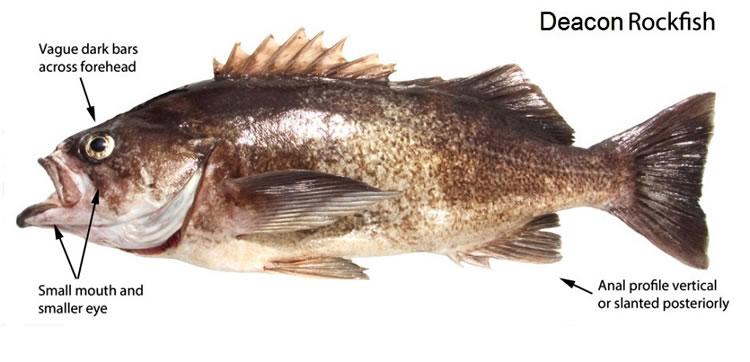Occasionally caught by recreational harvesters off the Washington coast and the Strait of Juan de Fuca.
Description and Range
Physical description
Deacon rockfish are a deep bodied fish with large pectoral fins. They have a blue-gray to dark brown body color with many small speckles covering the sides of body. Two stripes run across the eyes and distinct striping is also present on the forehead. Their bodies are lighter ventrally with blue-tipped pelvic fins.
Deacon rockfish resemble black rockfish after capture and when viewed underwater. They are distinguished by having a uniform blue-gray coloration, smaller mouth, stripes across the head, and no spots on the dorsal fin membrane.
Deacon rockfish closely resemble blue rockfish after capture and when viewed underwater. They are distinguished by having a darker blue-gray to brownish-blue coloration, many small speckles on the sides, generally pointed head shape, and longer symphyseal knob on the tip of the lower jaw.
Deacon rockfish can grow up to 53 cm (21 in) in length. Maximum age is 44 years old for males and 41 years old for females.
Geographic range
Deacon Rockfish are distributed from British Columbia to central California, with the highest concentrations occurring off the coast of northern California and Oregon. The full extent of their northern range is unclear, but the species is considered relatively absent in the Salish Sea. This species is most common from near the surface to about 90 m (297 ft). They are a schooling rockfish and are found just off bottom over rocky reefs, pinnacles, and kelp forests.
State record
- Weight
- 3.98 lbs
- Angler
- Donald Davenport
- Location
- Westport, Grays Harbor County
- Date Caught
- May 1, 2017
